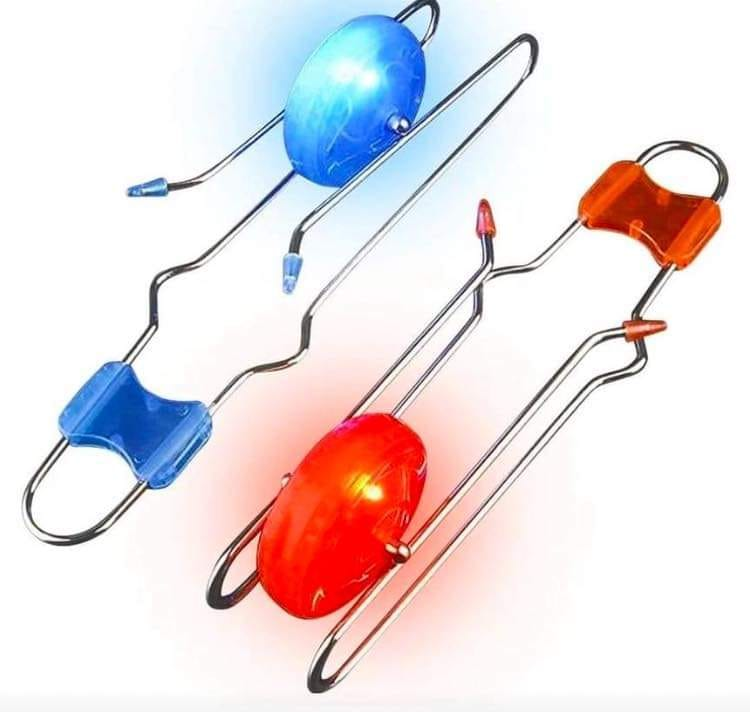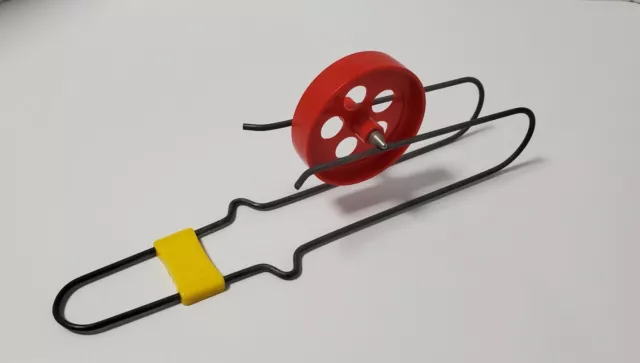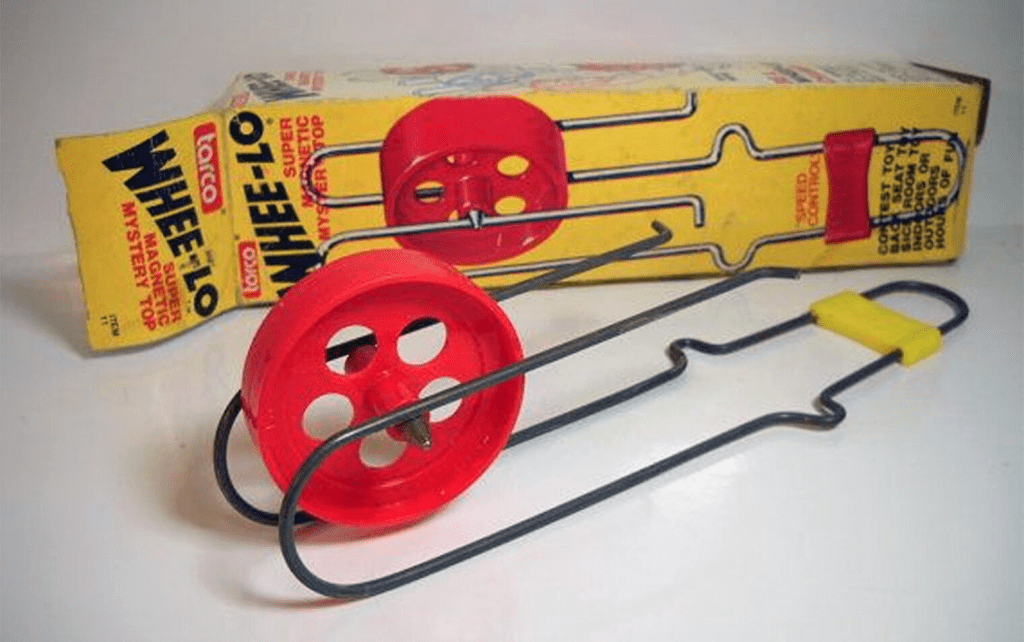The WHEE-LO, a handheld toy that has delighted children and collectors for decades, is more than just a simple plastic wheel. With its ingenious design and magnetic propulsion, the WHEE-LO has maintained a timeless appeal since its creation in the 1950s. This article explores the fascinating history of the WHEE-LO, its unique mechanics, and its enduring popularity, along with a look at how similar toys have emerged over the years.
What Is the WHEE-LO Toy?

The WHEE-LO is a mechanical toy that features a plastic wheel, magnets embedded within the wheel, and a metal track that guides its movement. When placed on the track, the wheel rolls along both the top and bottom sides, continually staying in contact with the track as it moves. The track itself is designed to tilt up and down, enabling the wheel to travel along its cyclical path. The use of magnets allows for smooth, consistent movement, creating a fascinating and satisfying visual effect as the wheel propels itself.
One of the most intriguing aspects of the WHEE-LO is how the wheel maintains its momentum. With precise timing, players can achieve high speeds, making the toy not only entertaining but also challenging. It’s a simple yet captivating toy that has endured through the decades.
The Origins of WHEE-LO: From Invention to Trademark
The story of the WHEE-LO dates back to 1953, when it was first marketed by the Maggie Magnetic Company based in New York City. However, the toy’s journey began even earlier, when inventor Harvey Matusow developed the concept. Matusow, in his autobiography The Stringless Yo-yo, credits himself with inventing the toy and selling the rights to the Maggie Magnetic Company in the early 1950s.
By 1958, the WHEE-LO toy was officially trademarked, marking the beginning of its commercial success. The toy came with a set of colorful cardboard discs, called “Whee-lets,” which could be attached to the wheel. These discs created optical illusions when the wheel spun, adding a layer of visual delight to the toy. The WHEE-LO quickly became a sensation, capturing the imaginations of children and adults alike.
How the WHEE-LO Works: A Closer Look at the Design
At the heart of the WHEE-LO’s innovative design is its magnetic propulsion system. The metal track is paired with a plastic wheel that has magnets built into it. These magnets interact with the track in such a way that the wheel is propelled along the length of the track. As the track tilts, the wheel continues to roll smoothly, traversing both sides of the track as it moves.
The WHEE-LO’s track is adjustable, with a plastic piece at one end serving as both a handhold and a slider to alter the width of the track. The width of the track plays a crucial role in the speed of the wheel. When the track is narrow, the wheel moves faster because it travels more distance with each rotation. Conversely, widening the track causes the wheel to slow down, providing a more leisurely ride. This feature allows for a range of playstyles, from leisurely observation to high-speed action.

The Evolution of the WHEE-LO: From Maggie Magnetic to Modern Toys
Though the WHEE-LO itself has remained a classic, other companies have been inspired to create similar magnetic toys. As of 2024, Schylling, a well-known toy manufacturer, produces a “Magnetic Gyro Wheel,” which is conceptually similar to the original WHEE-LO. This modern version offers a similar magnetic propulsion system and continues to captivate a new generation of toy enthusiasts.
Another company, Ipidi, has created a toy called the “Retro Magic Rail Twirler,” which draws on the same principles of magnetic movement but with a modern twist. These products show how the core concept of the WHEE-LO has influenced the development of new, innovative toys that continue to excite and engage users.
WHEE-LO’s Appeal: Why It’s Still Relevant Today
What makes the WHEE-LO enduringly popular is its simplicity and timelessness. While technology has changed the landscape of toys, the WHEE-LO remains a staple because it offers something that many modern toys don’t: a direct, hands-on experience with physics and motion. The combination of magnets, motion, and timing challenges children (and adults!) to engage with the toy in a way that is both educational and fun.

Additionally, the WHEE-LO is an example of how toys can blend entertainment with learning. Children can experiment with the track width, adjusting it to observe how speed changes. The toy also introduces basic principles of magnetism and physics in an engaging, interactive way, making it an excellent educational tool in addition to being a source of fun.
The Future of Magnetic Toys
As technology advances, it’s interesting to consider how the WHEE-LO’s concept will evolve. While toys like the WHEE-LO, Schylling’s Magnetic Gyro Wheel, and the Retro Magic Rail Twirler continue to be popular, new innovations in magnetism and toy design may lead to even more exciting and complex variations of the original idea. Magnetic toys, with their tactile interaction and ability to demonstrate basic scientific principles, are likely to remain a key part of children’s play for years to come.
With sustainability becoming a growing concern, there may also be a shift toward using eco-friendly materials in the construction of these toys, ensuring that future generations can enjoy them without the environmental impact.
Conclusion: A Timeless Toy That Captures the Imagination
The WHEE-LO is not just a toy – it’s a piece of nostalgic history that continues to captivate people of all ages. With its clever use of magnets, simple yet engaging mechanics, and the thrill of high-speed movement, the WHEE-LO has stood the test of time. Whether it’s the original version from the 1950s or modern iterations, this iconic toy reminds us that the simplest designs often make the most lasting impressions. As long as there are curious minds, the WHEE-LO will continue to inspire wonder and excitement, proving that sometimes, the best toys are the ones that allow us to play with the forces of nature themselves.


